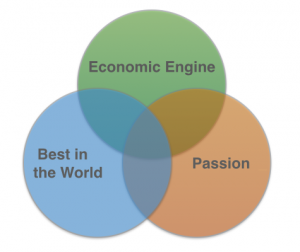
One of the most important decisions in building a great practice comes whenever we are hiring people. Likewise, one of the surest ways to destroy a great culture and derail growth is to pick the wrong people for your team.
“The old adage people are your most important asset turns out to be wrong. People are NOT your most important asset. The right people are.” - Jim Collins, Good to Great.
This principle from ‘Good to Great’ has been useful lately as we go through a round of hires at Texas Physical Therapy Specialists. Whenever we find ourselves in a position of needing to hire, inevitably the growth or circumstances that necessitates the hire pushes on us to accomplish it quickly to remove the pressure. The challenge is that this is the best time to slow down and be disciplined and rigorous. Its painful (just ask my directors waiting for help!) but it pays to put in the energy up front and hire the right person.
Here are 4 of my favorite rules to help us make this important decision:
- Cast a broad net. You want to make sure that you capture a large pool of applicants, rather than a sample of convenience. Sometimes a ‘good’ applicant appears fortuitously - making the path of least resistance a quick hire without much need for rigor. What if the 5th or 10th applicant would have been somebody great?
- Don’t compromise. The surest way to build a mediocre team is to hire mediocre people. Deal with the short term pain of the search and hire the very best you can find. The long term pain of a mediocre hire is worth avoiding.
- Hire for attitude, over aptitude. Unfortunately, we don’t always have the luxury of waiting for that perfect candidate to come along or we have to choose between two great people. When we do have to choose, we should give attitude and fit within our culture greater weight than competence and skill set.
- Do more than an old school interview. There are alot of tools out there to help you dig into who a person is. Consider using tools like the Omnia profile, Emotional IQ, Strengthsfinder or the VIA character strengths profile to give you a window into your candidate. Using this type of tool (don’t try to use them all) will make you slow down and think deeply about who you are hiring and their fit within your team.
 Packard’s Law captures why getting the right people on the bus is so important:
Packard’s Law captures why getting the right people on the bus is so important:
“No company can grow revenues consistently faster than its ability to get enough of the right people to implement that growth and still become a great company”. - Jim Collins, How the Mighty Fall.
Take the time to hire slowly…. and the second half of that adage is … fire quickly. We’ll talk about kicking people off the bus next time.


